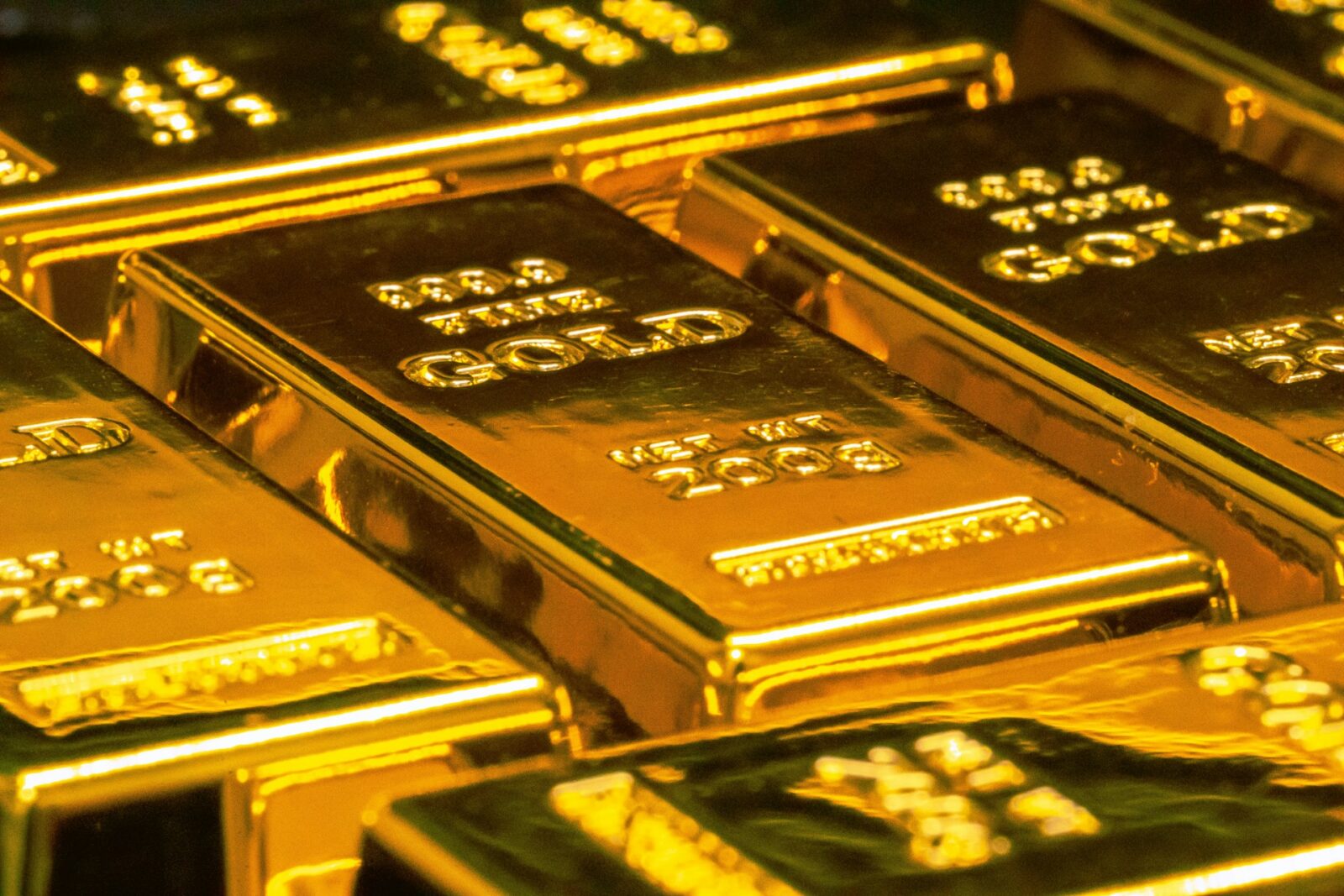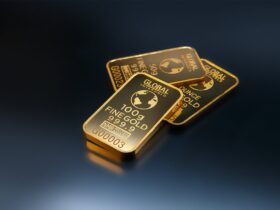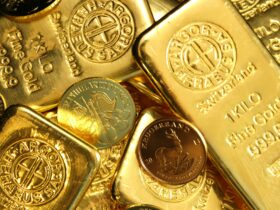A Perfect Storm for Precious Metals
In times of financial unease, few assets command the same respect — or fascination — as gold. Once again, the world’s oldest store of value has surged to historic highs, fueled by a combination of Federal Reserve rate-cut expectations, escalating US–China tensions, and an intensifying flight toward safe-haven assets.
On Wednesday, gold prices soared to a new record of $4,193.65 per ounce, extending an extraordinary rally that has gripped global markets since the start of the year. Silver followed closely, touching an all-time high of $53.54 per ounce before retracing amid volatile trading.
For investors, this moment marks not just another milestone for the yellow metal, but a broader reflection of a shifting macroeconomic order — one where central bank policy, global trade friction, and currency debasement fears converge to redefine the value of “real” assets.
The Fed’s Signal Ignites a New Gold Rush
At the heart of gold’s latest breakout lies a powerful catalyst: the Federal Reserve’s renewed commitment to easing monetary policy.
During his recent address, Fed Chair Jerome Powell hinted that the central bank is “on track” to deliver another quarter-point rate cut later this month, following an earlier reduction in the summer. The remarks sent ripples through global bond markets — pushing US Treasury yields to their lowest levels since 2022 and reigniting investor appetite for non-yielding assets like gold.
Lower yields effectively reduce the opportunity cost of holding gold, which doesn’t pay interest or dividends. At the same time, cheaper borrowing costs stimulate demand across the broader economy — often weakening the dollar, another tailwind for gold’s ascent.
“Every time Powell hints at a rate cut, gold responds like a coiled spring,” said Manav Modi, precious metals analyst at Motilal Oswal Financial Services. “The market is recalibrating around the idea that real rates will stay lower for longer — and that’s rocket fuel for bullion.”
Tensions Between Washington and Beijing Add Fuel
If monetary policy lit the spark, geopolitical risk poured gasoline on the fire.
President Donald Trump’s latest remarks, suggesting he might “halt trade in cooking oil with China,” deepened existing hostilities between the world’s two largest economies. The comments followed last week’s threat to impose an additional 100% tariff on Chinese goods, prompting Beijing to vow retaliatory action.
Markets immediately entered “risk-off” mode. Stocks retreated globally, and investors flooded into traditional safe-haven assets — gold, silver, and the US dollar.
The timing couldn’t be more sensitive. With both economies still grappling with fragile growth and a fragile supply chain landscape, any trade escalation heightens volatility, driving investors toward assets historically resilient to political shocks.
“The US–China standoff has evolved into a structural, not cyclical, tension,” explained Chloe Tan, macro strategist at AsiaQuant Research. “Even symbolic trade threats are enough to ignite risk aversion. Gold thrives in precisely this kind of uncertainty.”
Silver’s Volatility Reflects Market Tightness
While gold has captured headlines, silver’s story is equally compelling — and perhaps even more dramatic.
The London silver market, a key global hub, has been gripped by a historic liquidity squeeze, pushing prices to near-unprecedented premiums over New York futures. Traders scrambled to secure physical metal, at one point resorting to air freight shipments of silver bars to exploit arbitrage opportunities.
The resulting dislocation briefly propelled silver above $53.50 per ounce, its highest level in modern trading history. However, as liquidity gradually improved, prices eased back — though they remain near multi-decade highs.
The widening gap between London and New York markets underscores a broader issue: supply tightness amid booming demand for industrial metals tied to AI and green technology. Silver, used heavily in solar panels and semiconductors, sits at the crossroads of both innovation and inflation — a rare dynamic that amplifies its price sensitivity.
“Silver is behaving like a hybrid asset — part industrial commodity, part safe haven,” noted Evan McKinley, senior metals strategist at Commodity Insights. “When liquidity dries up, volatility spikes. But the long-term fundamentals remain firmly bullish.”
Central Banks Are Quietly Stockpiling Gold
Behind the market fireworks, a quieter but more consequential trend is underway: central bank gold accumulation.
According to recent data from the World Gold Council, global central banks purchased nearly 1,000 metric tons of gold in the past year — one of the largest buying sprees in modern history. Nations from China to Poland have been aggressively diversifying away from the US dollar, seeking to shield reserves from geopolitical risk and potential sanctions.
This wave of official buying not only supports prices but also signals a structural shift in global monetary confidence. For countries wary of dollar dominance and Western financial influence, gold remains the one asset that sits outside the reach of any central authority.
“Central banks don’t speculate — they hedge systemic risk,” said Anita Verma, economist at Zenith Global Capital. “Their continued gold accumulation suggests deepening concern about global debt sustainability and long-term fiat stability.”
The Dollar’s Weakness Reinforces the Rally
As Treasury yields dropped, the Bloomberg Dollar Spot Index slipped, reflecting declining confidence in US monetary assets. A weaker dollar makes gold and silver cheaper for non-US investors, amplifying global demand.
At the same time, renewed talk of US government shutdown risks and ballooning fiscal deficits has reignited the so-called “debasement trade” — the view that investors should hold tangible assets to guard against inflation and currency erosion.
The combination of policy easing, political friction, and debt overhang has proven a perfect storm for precious metals.
How High Could Gold Go Next?
With gold now trading above $4,180 per ounce, analysts are divided on how far the rally can go.
Some forecast consolidation as short-term traders take profits, while others argue that structural factors — from central bank buying to AI-driven industrial demand for precious metals — will continue pushing prices higher.
J.P. Morgan, which correctly predicted gold’s climb past $3,800 earlier this year, recently raised its 2026 price target to $4,500 per ounce, citing global liquidity conditions and persistent geopolitical risk.
However, a handful of analysts warn that rapid gains could invite volatility. Should real interest rates rise unexpectedly or diplomatic tensions ease, a pullback is possible. Yet, as history has shown, gold often consolidates at higher floors after each breakout cycle.
“This isn’t a speculative bubble — it’s a fundamental repricing of money,” said Verma. “As long as inflation outpaces real yields, gold remains the asset to own.”
The Global Ripple Effect
The gold rally is reverberating through commodity markets worldwide. Platinum and palladium, two metals often overshadowed by gold, have each climbed more than 60% year-to-date, buoyed by industrial recovery and safe-haven demand.
Emerging-market economies, meanwhile, are grappling with higher import costs for precious metals, putting pressure on trade balances and local currencies. In countries like India — one of the world’s largest gold consumers — record prices could temporarily dampen jewelry demand while fueling investment appetite.
Even cryptocurrencies like Bitcoin, long touted as “digital gold,” have moved in tandem with bullion during the recent turbulence, underscoring investors’ appetite for non-sovereign stores of value amid uncertainty.
Gold’s Enduring Power in an Age of Instability
Gold’s latest ascent is more than a market event — it’s a reflection of a world in flux. As the Federal Reserve pivots toward easier policy, geopolitical rivalries intensify, and trust in fiat currencies wavers, investors are returning to gold as the ultimate anchor of confidence.
While volatility will inevitably follow such explosive gains, the metal’s long-term trajectory remains underpinned by the same forces that have defined its value for millennia: scarcity, resilience, and universal trust.
In an era where algorithms trade in nanoseconds and digital assets rise and fall overnight, gold remains a reminder that true wealth isn’t just measured in numbers — it’s measured in endurance.







Leave a Reply